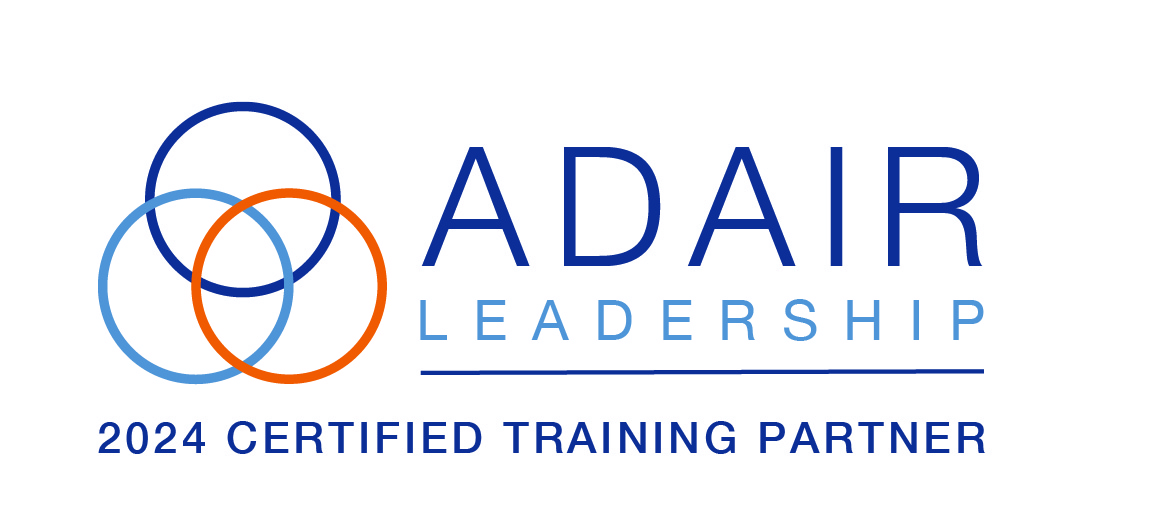COVID-19 Update: September 2020
Job Support Scheme
The Government has announced the successor to the Flexible Furlough Scheme by way of the Job Support Scheme. The details of the scheme have still not been published. However, a summary of what we know at present is outlined below. This however, is subject to change once the full details are provided.
1. Unlike the Furlough Scheme, it is designed to protect ‘viable jobs’ in businesses who are facing lower demand over the winter months due to Covid-19, rather than every job.
2. In general terms, the employer will continue to pay its employee for time worked, but the financial burden of hours not worked will be split between the employer and the Government.
3. The Government will pay a third of hours not worked up to a cap (£697.92 a month), with the employer also contributing a third. This the Government advice states, will ensure employees earn a minimum of 77% of their normal wages, where the Government contribution has not been capped.
4. Employers using the Job Support Scheme will also be able to claim the Job Retention Bonus (£1,000 one off payment, paid during February 2021) if they meet the eligibility criteria.
5. The Job Support Scheme will open on 1 November 2020 and run for 6 months, until April 2021.
6. All employers with a UK bank account and UK PAYE schemes can claim the grant. Neither the employer nor the employee needs to have previously used the Government’s Coronavirus Job Retention Scheme (Furlough Leave).
7. Large businesses will have to meet a financial assessment test, so for a large business the scheme is only available to those whose turnover is lower now than before and experiencing difficulties from Covid-19. In addition there will be a number of limitations around dividend payments and company share buy backs. In contrast, there will be no financial assessment test for small and medium enterprises (SMEs).
8. Employees must be on an employer’s PAYE payroll on or before 23 September 2020. This means a Real Time Information (RTI) submission notifying payment to that employee to HMRC must have been made on or before 23 September 2020.
9. In order to support viable jobs, for the first three months of the scheme the employee must work at least 33% of their usual hours. After 3 months, the Government will consider whether to increase this minimum hours threshold.
10. Employees will be able to rota on and off the scheme and do not have to be working the same pattern each month, but each short-time working arrangement must cover a minimum period of seven days.
11. Grant payments will be made in arrears, reimbursing the employer for the Government’s contribution. The grant will not cover Class 1 employer NICs or pension contributions, although these contributions will remain payable by the employer.
12. “Usual wages” calculations will follow a similar methodology as for the Coronavirus Job Retention Scheme. Full details will be set out in future guidance to be issued by the Government. Employees who have previously been furloughed, will have their underlying usual pay and/or hours used to calculate usual wages, not the amount they were paid whilst on furlough. Employers must pay employees their contracted wages for hours worked, and the Government and employer contributions for hours not worked.
13. The expectation is that employers cannot top up their employees’ wages above the two-thirds contribution to hours not worked at their own expense.
14. The employee must be working at least 33% of their usual hours. For the time worked, employees must be paid their normal contracted wage. For time not worked, the employee will be paid up to two-thirds of their usual wage.
15. In a marked contrast to the Coronavirus Job Retention Scheme, employees cannot be made redundant or put on notice of redundancy during the period within which their employer is claiming the grant for that employee.
16. The scheme will be open from 1 November 2020 to the end of April 2021. Employers will be able to make a claim online through Gov.uk from December 2020. They will be paid on a monthly basis. Presumably in an attempt to limit fraudulent use of the scheme, employees will be informed by HMRC directly of full details of the claim.
The calculation for financial support that can be claimed is more complicated than under the ‘furlough scheme’. An example calculation is given in Government Guidance (with further explanation and example from us):
• Beth normally works 5 days a week and earns £350 a week, so £70 per day.
• The company puts Beth on the Job Support Scheme, working 2 days a week (40% of her usual hours) and pays her £140 for the days she works (2 x £70).
• She is not working (3 days or 60% of her working week). This amounts of £210 (3 days x £70 per day).
• Under the Job Support Scheme she will also earn two-thirds of the unworked time, or £140, bringing her total earnings to £280 (£140 for the 2 days worked and £140 in respect of the two-thirds calculation that has to be paid under the Job Support Scheme). This is equivalent to 80% of her normal wage: £280 per week rather than £350 per week.
• The Government will give a grant worth £70 (one third of hours not worked, equivalent to 20% of her normal wages) to Beth’s employer to support them in keeping Beth’s job.
Example 2
• Fred works 5 days per week and earns £500 per week, so £100 per day.
• Fred’s hours are reduced to 50%, so he works half a week, earning £250.
• He is not working for 50% of the week, equivalent to £250.
• Under the Job Support Scheme, Fred will be paid by his employer two-thirds of the unworked £250 so £166.67. Fred will therefore earn in total £416.67 (£250 for the hours worked plus £166.67 under the scheme rules).
• The Job Support Scheme will give a grant worth £83.33 to the employer (one third of the hours not worked).
Statutory Sick Pay (SSP) and Covid-19
When Does SSP Become Payable?
The current definition of deemed incapacity for SSP purposes under the new rules includes:
Self-isolating for one of the following reasons and therefore unable to work:
• Experiencing symptoms of COVID-19 and self-isolating for 10 days (or, if earlier, until the end of the isolation period).
• Living with someone (or in an extended or linked household with someone) who is isolating due to having symptoms of COVID-19, and self-isolating for a period of 14 days (or, if earlier, the end of the isolation period).
• Developed symptoms of COVID-19 while already self-isolating due to a member of the employee’s household having symptoms, and self-isolating for a period of 10 days (or, if earlier the end of the isolation period).
• Been advised through the contact track and tracing system or equivalent that they have come into contact with someone who was, at the time, infected with COVID-19, and self-isolating for the duration specified in the notification.
• Tested positive for COVID-19 and self-isolating until the later of (1) 10 days from the date the employee first had symptoms or (if earlier) they first tested positive, and (2) the date that they no longer have symptoms of COVID-19.
• Living with someone (or in an extended or linked household with someone) who has tested positive for COVID-19, and self-isolating until the later of (1) 10 days from the date that the person who has tested positive first had symptoms or (if earlier) they first tested positive and (2) the date on which the person who tested positive no longer has symptoms of COVID-19.
”Symptoms” of COVID-19 in this context means a continuous cough, a high temperature, or a loss of or change in their normal sense of taste or smell.
Amendments to Normal Rules on SSP and Fit Notes
The following changes are now in force:
• The SSP deemed incapacity rules have been extended to cover those who self isolate in accordance with government guidelines.
• Online isolation notes can be used by employees to provide evidence to their employers that they have had to self-isolate.
• SSP can be claimed from the first day of incapacity in respect of absences.
• Employers will fewer than 250 employees can reclaim SSP paid in respect of the first 14 days of COVID-19-related sickness absence.
What Evidence Can an Employer Require in Relation to COVID-19 Related Absences?
Apart from the usual fit note, the government has confirmed that the following will amount to evidence of sickness for SSP purposes where the absence relates to COVID-19:
• An isolation note from NHS 111.
• The notification from the NHS or public health authorities if they are self-isolating because they have come into contact with someone with COVID-19.
Can I Suspend and Send an Employee Home From Work to Self-Isolate?
Homeworking should be utilised as an alternative to suspension for the purposes of self-isolation, wherever possible.
If there is an identified risk that an employee may have been exposed to COVID-19, then an employer may wish to keep that employee away from the workplace until the risk has passed. For example an employee knows that they have been in the vicinity of another individual at the pub who has contacted Covid but the employee has not yet (and maybe never will be) been contacted by the track and trace system.
Where an employee is suspended by their employer on health and safety grounds, because of a possible risk of infection which does not fall within the government’s self-isolation advice, it is likely that they have the right to continue to receive full pay on the basis of the employer’s implied duty to pay wages.
Where an employer is considering suspension because an employee falls within the circumstances in which public health advice is to self-isolate then the position in terms of pay may be different. If the employee falls within one of the categories of people identified in the schedules to the SSP Regulations (who have been advised to self-isolate) then they will fall within the new deemed incapacity rules for SSP.
What Are the Employment Consequences of the Test and Trace System?
On 28 May 2020 a system to test those with symptoms of COVID-19, and then contact people they have been in contact with, was introduced in England and a similar system exists in Wales.
Employees who are contacted by the track and trace system are required to self-isolate and are entitled to SSP.
The Government’s NHS test and trace: workplace guidance provides the following advice to employers in relation to the test and trace initiative:
• Employers have a vital role in encouraging workers to heed notifications to self-isolate and supporting them when in isolation.
• The introduction of test and trace does not change the existing guidance on working from home wherever possible.
• Workers who are self-isolating and cannot work from home should be paid the appropriate level of sick pay, and should be given the opportunity to use their annual leave if they prefer.
• Where an employee who has developed symptoms identifies colleagues as close contacts who may have been infected, the employee may wish to (but is not obliged to) ask their employer to alert those co-workers. Prior to receiving the test result, those identified as having come into contact with the person with suspected infection are not required to self-isolate but they should ensure that they avoid those who are high risk of contracting COVID-19, take extra care in practising social distancing and good hygiene, and watch out for symptoms. The guidance does not clarify how an employer should deal with this scenario but it seems that an employer who becomes aware that a worker has developed symptoms and has been in contact with colleagues will need to consider its health and safety obligations in terms of whether it requires those colleagues to remain at home until the worker with symptoms has received their test result.
• The notification from NHS test and trace instructing an individual to self-isolate due to contact with an infected person will be sufficient as evidence of sickness for SSP purposes and will be necessary in order to allow the employer to obtain a rebate for SSP.
Absence and Pay: Refusals to Attend Work
Where an Employee Refuses to Attend Work Due to Fears About COVID-19, What Action Can the Employer Take and What Pay Are They Entitled to?
If the employee can work from home, this may well resolve the issue. If not, the employer would need to consider the current public health advice, the specific reason that the employee is concerned about attending work and whether it would be discriminatory to refuse home working, take disciplinary action, or withhold pay in light of the employee’s refusal.
What Can an Employer do if a Refusal to Attend Work is in the Context of a Close Relative Being in a Vulnerable Category?
If homeworking, or redeployment into a role that is suitable for homeworking, can be arranged then this is likely to be the obvious solution. If not, then the specific circumstances would need to be analysed to identify whether there is a discrimination or other risk if the employee is treated detrimentally as a result of their desire to remain away from the workplace.
The law on associative discrimination is a factor but does not extend to the obligation to implement reasonable adjustments.
How Should an Employer Deal With an Employee Who Has Severe Anxiety and is Afraid to Attend Work?
An employer should be sympathetic to any concerns staff may have and try to resolve them to protect the health and safety of the employee. For example, if possible, the employer could offer flexible working, or allow the employee to take holiday or unpaid leave. This is particularly relevant as Government advice in England has changed to working from home where reasonably possible and there is a similar position in Wales with much of the population currently under local lockdown.
An employee with severe anxiety may find their condition is exacerbated by travelling or being in public places due to the increased risk of contracting COVID-19. The ACAS Guidance suggests that an employer could offer extra car parking where possible so that the employee can avoid using public transport, keep the employee on furlough if they are temporarily unable to work, or arrange for them to temporarily work different hours to avoid peak time travel.
If the employee’s anxiety prevents them from attending work, it is possible that they may be regarded as on sick leave and therefore entitled to SSP or contractual sick pay.
Where an employee suffers from severe anxiety, this could amount to a disability under the Equality Act 2010. Medical advice should be sought as soon as possible from a specialist treating the employee, or occupational health, to determine whether the employee is disabled (if there is no recent diagnosis) and, if so, to see what adjustments, if any, should be made to assist the employee in continuing to work, such as home working or flexible hours.
What About Other High-Risk Employees Who Choose to Self-Isolate?
Some employees may fall into a high-risk category in relation to COVID-19 but are not disabled. The World Health Organisation (WHO) has identified that those aged over 60, or who suffer from cardiovascular disease, a respiratory condition, diabetes, an auto immune condition or who are pregnant, are at a higher risk of developing more severe symptoms. There is also evidence that ethnicity has a significant effect on risk of death from COVID-19, and that gender plays a role in risk with men being at a higher risk of death from COVID-19. Not all of these individuals will fall within the formal public health guidance for the clinically vulnerable and clinically extremely vulnerable. The fact that the individuals are not identified as at higher risk in the UK’s public health guidance does not preclude them from protection in terms of discrimination law and does not change the need to undertake appropriate risk assessments.
Such employees may wish to self-isolate, even before seeking medical advice. The ACAS guidance states that an employer should listen to any concerns staff may have and if they are genuine, the employer must try to resolve them to protect the health and safety of their staff. For example, if possible, the employer could offer flexible working, or allow the employee to take holiday or unpaid leave. It may be appropriate to obtain a medical report or occupational health advice.
If you would like to discuss further, please contact us by emailing enquiries@perspectivehr.co.uk or by phoning 01392 247436.
Last updated 29 September 2020




